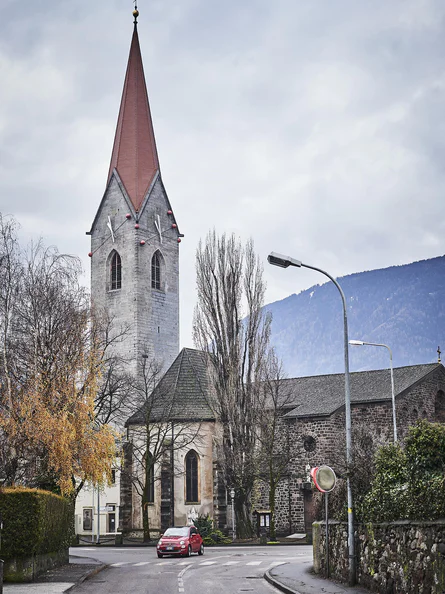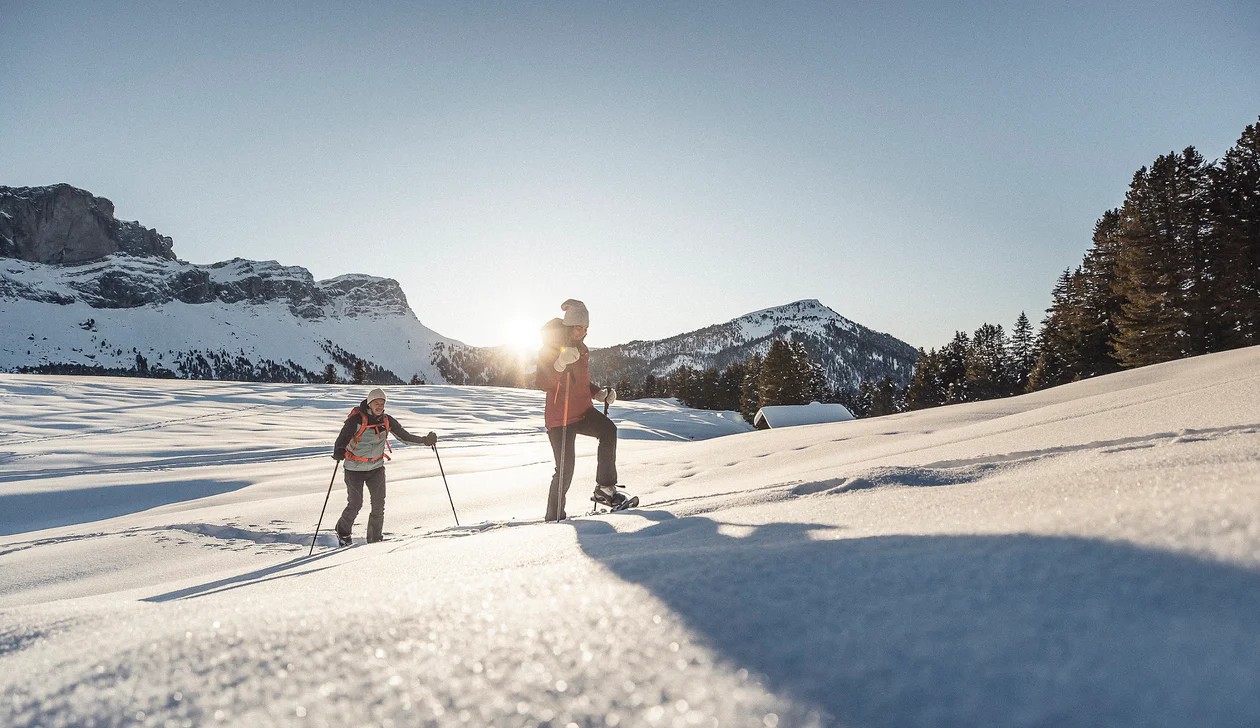Es gibt keinen Ort in Südtirol, in dem keine Kirche steht: Christlich geprägt, gibt es hierzulande eine große Dichte an Kirchen und Kapellen, Klöstern und Abteien, die ältesten davon bereits aus der frühchristlichen Zeit. Entlang viel frequentierter Wege, die bereits im frühen Mittelalter als Verbindung zwischen Nord und Süd dienten, entstanden Kapellen als Schutz für Reisende, Hospize und Kommenden für Ritterorden. Dazu kamen Klöster auf dem Land und in Städten, größere Kirchen und Kathedralen. Heute sind weit über 250 Kirchen erhalten und zugänglich. Besuchen Sie diese in kultureller, künstlerischer und kunsthistorischer Hinsicht interessanten Bauwerke, die Zeugen einer wechselvollen Geschichte sind.
This parish church is located in the area of Maia Bassa (Untermais), at the end of Via Piave. The present bell tower stands on a 6-metre-high Romanesque base. The old Gothic church, built between the thirteenth and fourteenth centuries, is located below the apse of the current building, which was erected between 1934 and 1936. Inside, there are some ancient Romanesque relics, a priceless Gothic altar, and a number of frescoes dating back to the fifteenth century. Masses in German: Mondays and Tuesdays: 7:00 a.m. Wednesdays from Easter to All Saints’ Day: 7:00 p.m. Wednesday from All Saints until Easter: 6:00 p.m. Thursdays and Fridays: 7:00 a.m. Saturdays - from Easter to All Saints: 7:00 a.m. & 7:00 p.m. - from All Saints until Easter Saturday: 7:00 a.m. & 6:00 p.m. Sundays: 7:30 a.m. & 10:00 a.m. Masses in Italian: Sundays and public holidays in winter: 9:00 a.m. & 11:15 a.m. Sundays and public holidays in summer: 9:00 a.m.
































































